The saying ‘I could write a book’ is often heard exclaimed by someone who has been through tough times, or at the very least some sort of ordeal. It tells the listener that the person has a wide-eyed and colourful tale to tell. For people living with cancer, quite paradoxically their individual stories can be as unique as a crystalline snowflake, yet at the same time, thematically undifferentiated.
In oncology wards, treatment centres and support groups around the world, the prevalence of cancer becomes a startling reality for newly diagnosed patients. The shock and fear of being alone in the experience often gives way to a dawning realisation that in fact there are multitudes of people everywhere fighting this chronic disease. In 2012, Cancer Research UK published statistics indicating that there were an estimated 14.1 million new cases of cancer worldwide in that year. This year in Australia, 134,000 new cases will be reported according to the Cancer Council of Australia while cancer continues to be one of the major causes of death. It would seem that many share a similar story.

There were 14.1 million new cases of cancer reported worldwide in 2012 according to Cancer Research UK.
Book making and story telling can be an extraordinarily cathartic method for people to feel as if the great challenges of their life have been fully witnessed and understood by the reader or listener. It can also hold the keys to change for the writer who, through creativity and growth, sees themselves in a different light once the story has been written and told. Recently I facilitated a seven part art therapy program at the Cancer Care Centre in Unley, South Australia called The Hero’s Journey where the participants authored their own mythical tales based on their experience of cancer. They also made and bound their books from raw and found materials. The program was run over several months during which five very unique and strong women came together to share their experiences.
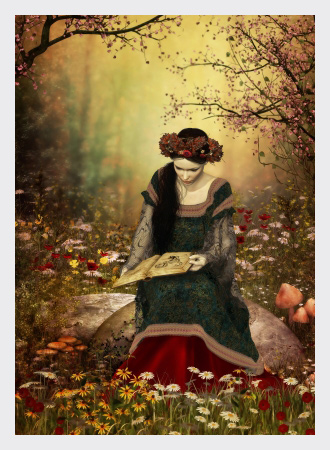
Imagine yourself visiting a library where every author of every book was a person who had gone through cancer, and every book contained a chronological day to day account of their experience with doctors and drip lines, fatigue and fear of death. The reader might find the subject matter on offer in this library quite bleak, monotonous and repetitive. Indeed embarking on a readathon of such proportions may yield the result of disengagement from even the most enthusiastic and compassionate of bookworms. Now for a moment, imagine what literary treasures might spill forth from the shelves if instead, every author of every book in that library had written their cancer story as a mythical tale with folklore, fantasy, elves, witches, woodland creatures and giants. If each book were a fictitious narrative, imaginatively recounted with the colour and sparkle of a fairytale, consider how very different that might be, not just for the reader but more importantly the author. For they, in the creative process might be able to shed the pale blue cotton of a hospital gown only to wrap themselves in the red velvet of queens, or painted silks of fairy folk, or the shimmering pastel rainbow of a dragonfly’s wings. For the participants of my art therapy program, this is exactly what happened.
In the creation of their storybooks, each participant was able to freely explore alternate, imaginary versions of real world events by substituting them for symbols, metaphors and archetypal characters. The freedom to create a mythical version of their unique cancer journey plumbed a profound depth of meaning for them, looking back and recognising the heroic feats of achievement they had attained in their fight against a chronic, life threatening disease. They each created an original and compelling memorial of their unique experience and in doing so, were able to celebrate the victory of overcoming great trials and in most instances, accept the future for whatever it may hold.
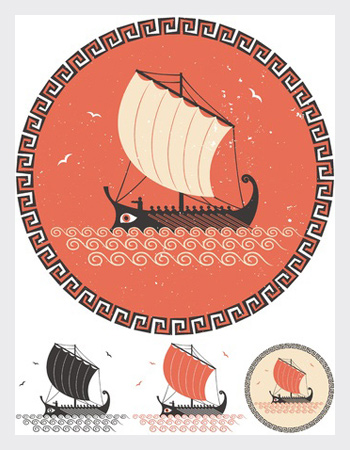
My program was designed around the fundamentals of the popular storytelling model known as the ‘Hero’s Journey’ or ‘Monomyth’. First conceptualised by early 20th Century psychoanalyst Otto Rank, his notion of a common pattern in heroic tales emerged into the field of psychology and today has a solid presence in the creative modalities of psychotherapy . One such tale is Homer’s The Odyssey; perhaps one of the oldest and best-known works of literature from ancient Greek mythology. Set in the time period after the Trojan Wars, the hero, Odysseus (sometimes known as Ulysses), finds himself shipwrecked and out of favour with the gods. The Odyssey is about his epic struggle to cross ‘the wine dark sea’ and return to his beloved wife Penelope in Ithaca. He journeys through many foreign lands and overcomes dozens of hopeless obstacles and trials. Aided by the goddess Athena, Odysseus navigates the land of the lotus eaters, Circe’s island, a giant cyclops, the bewitchment of the Sirens, a fearsome sea monster called Scylla and the amorous nymph, Calypso. Just a few hurdles to overcome before he reaches his final destination where the penultimate trials must be conquered in his quest for glorious victory.
The Hero’s Journey model was conceptually expanded by others such as Lord Raglan and Vladimir Propp who linked the narrative model to Russian fairy tales. However, the most well known and prolific writer on the subject is mythologist, Joseph Campbell who describes the basic narrative pattern as such: “A hero ventures forth from the world of common day into a region of supernatural wonder: fabulous forces are there encountered and a decisive victory is won: the hero comes back from this mysterious adventure with the power to bestow boons on his fellow man.” (Campbell, 2004, p28) Indeed this narrative pattern can be applied to many popular epic saga’s such as Star Wars, the Wizard of Oz, Alice in Wonderland and Tolkein’s Lord of the Rings in which the relative heroes Luke Skywalker, Dorothy, Alice and Frodo Baggins all venture forth into the unknown of their journeys.

Alice journeys down a rabbit hole to find herself amidst her own hero’s journey.
Bruno Bettelheim, was an American psychologist who wrote a book called The Uses of Enchantment on the topic of therapeutic value in fairy tales and folklore. His idea echoes the greek philosopher Seneca in that our struggle with difficulty in life is an inevitable fact and to be expected. However, if we don’t shy away from these challenges but face up to them boldly, we have the capacity to master the obstacles and emerge from the battles victoriously. (Bettelheim, 1991, p8) His writing unpacks the idea that people can make use of fairy tales to cope with baffling emotions whether they be about the inner realms of self or fear of the outside world.
In his chapter entitled ‘Fairy Tale Versus Myth’, he describes how modern thinkers such as Mircea Eliade have studied myths and folk tales from a philosophical and psychological viewpoint arriving at the same conclusion. That these stories are “models for human behaviour…that give meaning and value to life” (p.35). They “give symbolic expression to initiation rites or other rites de passage – such as metaphoric death of an old inadequate self in order to be reborn on a higher plane of existence”. This is why folklore and myth meet such a strongly felt need in our modern world as carriers of deep meaning.
For people with cancer there is an undeniable sense of emerging from the maelstrom of treatment in one way or another transformed, both physically and psychologically. As each of the participants in my group had gone through their own rites of passage in the form of cancer treatment, surgery or alternative healing approaches, it was my intention that they be given a chance to develop their own symbolic expression through which their own stories could be told. Each one was original with a cast of archetypal characters such as wizards, princesses, blue wrens, dragonflies, shape-shifters and a velvet coat that seemed to have a life of its own. Each had a very distinct voice, yet themes of fear, courage, fragility, inner strength, acceptance and resilience were common to all of them. The participants kept their stories a well guarded secret until the final day when seated in a circle, they all read them aloud to each other. This proved to be a deeply moving and supportive ritual, witnessing each person’s myth in reverent and solemn respect, while forging the bonds of shared experience.

Heroines sewing their books into their illustrated covers
Not only did the participants write their Hero’s Journey tale, they also made their own books from scratch. From the paper to the canvas covers which they illustrated themselves as well as sewing the pages together. The paper-making process was quite a big task but also a symbolic act in authoring the book from the first spark of imagination, right through to the finished, bound product. Each participant was asked to bring along relics from their cancer days such as letters from doctors or pamphlets they no longer needed, flowers from their garden or anything they’d like to add to their paper pulp that had direct relevance and meaning to their real life story.

Adding some lavender to the pulp
As a result, each page of their books were symbolically fused with shredded physical remnants of the past. My intention for doing this was to use the the art media in such a way that it represented on a deeper level, that metaphoric death of the old self and rebirth on to a higher plane of existence as described earlier in the musings of Mircea Eliade. The paper that was pulped was recycled and transformed into something new and beautiful and meaningful. The participants loved the discovery process of paper-making, one stating “I’ve enjoyed learning how to make ‘paper’ – each piece a product of a unique process of experimentation, learning and surprise!”
Some learned how to come to terms with imperfections in the results, realising that some of the perceived ‘mistakes’ in fact had poignant, symbolic meaning. For example, one lady was frustrated that her page had a rip that couldn’t seem to be fixed no matter how hard she tried to patch it up, but when she thought about the relevance of this in contrast to her real life story, she realised that the tear was meant to be there as a symbol of her soul that had been torn with grief over the death of a loved one.
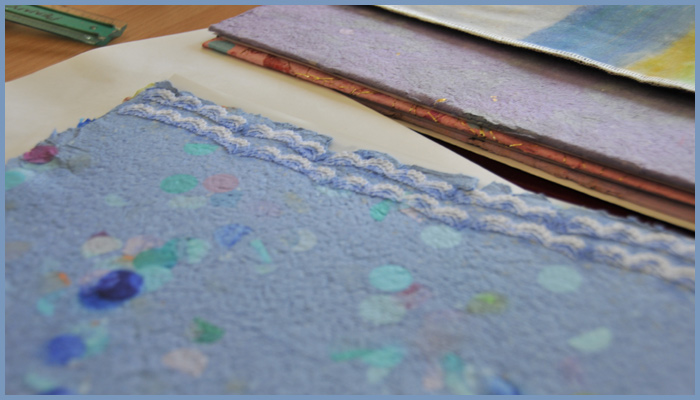
Lace edges and confetti
Another participant said of the whole experience, “Writing my hero’s journey turned out to be a labor of love and took place after a long period of letting things brew silently in my mind, then the writing process which happened over a couple of intensive sittings. It was a valuable process for me and very heart-warming to get such positive feedback when I shared it with my family.” The sharing of one’s mythical tale is perhaps one of the most cathartic and healing aspects of the whole process. Joseph Campbell said it best, that “mythological symbols touch and exhilarate centers of life beyond the reach of vocabularies of reason and coercion.” Undoubtedly, there is something about hearing our own stories read aloud and in the presence of a captive audience that really plugs us in to the recognition of our own heroic feats of endurance and survival.

As humans we yearn to be understood by loved ones and strangers alike. Using myth, symbol and metaphor in storytelling is a poetic and imaginative way of helping others glimpse into our deeply idiosyncratic internal worlds so that they can better resonate with our true experience of hardship, struggle and triumph. In a world where 14.1 million people go through similar diagnoses each year we can lose sight of the fact that cancer is a wholeheartedly individual experience to which those who endure it attribute vastly divergent and personal meaning. Listening to another’s story in this unconventional way provides the listener with an opportunity to feel genuine empathy, sometimes more so than if they had simply heard the real life version of the journey.
As an art therapist and recent survivor of Stage III breast cancer myself, I was greatly inspired by the creativity and courage of each woman in the process of the Hero’s Journey program and will be running more programs throughout the year. If you have been through cancer yourself and would be interested in participating in this program, please email me to register your interest.
Rebekah Popescu
Art Therapist
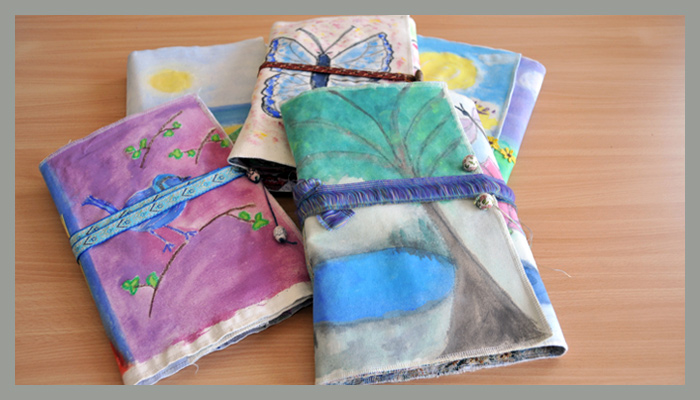
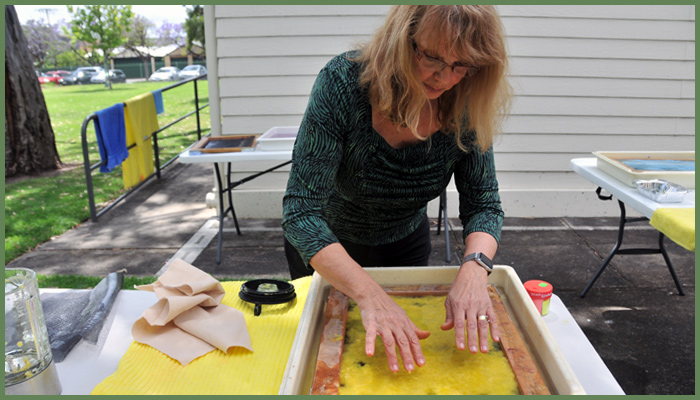

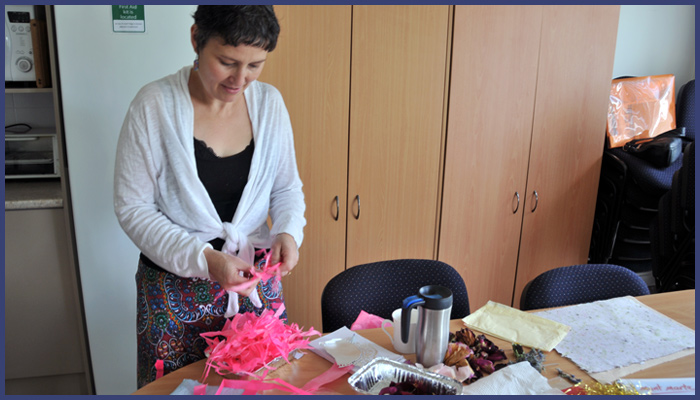


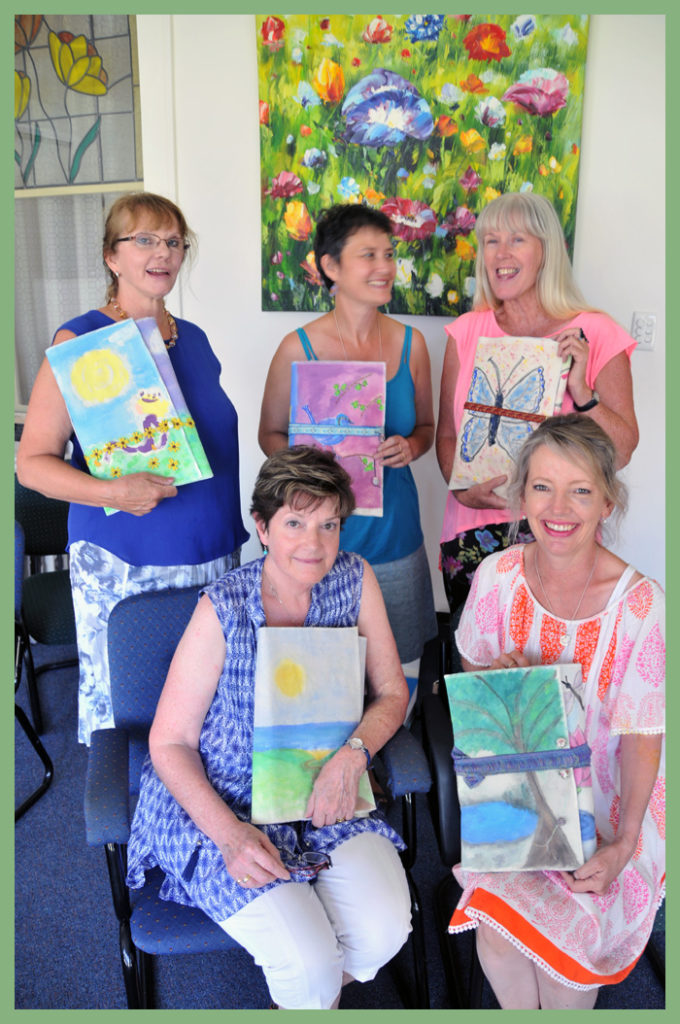
Heroines of the program
References
Bettelheim, B. (1991). The Uses of Enchantment: The Meaning and Importance of Fairy Tales. Harmondsworth: Penguin.
Campbell, J. (2004). The Hero with A Thousand Faces (Commemorative Edition). New Jersey. Princeton University Press
Worldwide cancer statistics. (2016, October 10). Retrieved March 05, 2017, from http://www.cancerresearchuk.org/health-professional/cancer-statistics/worldwide-cancer

